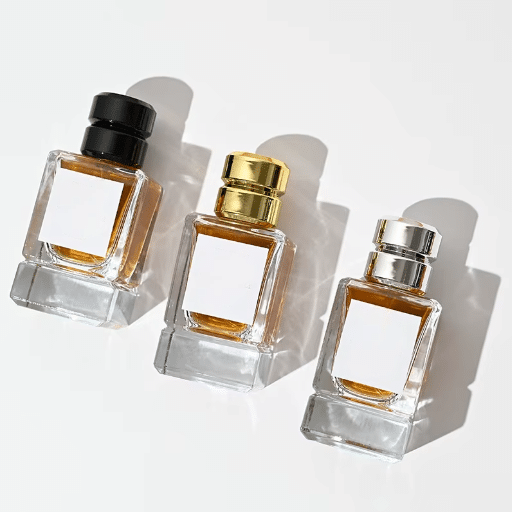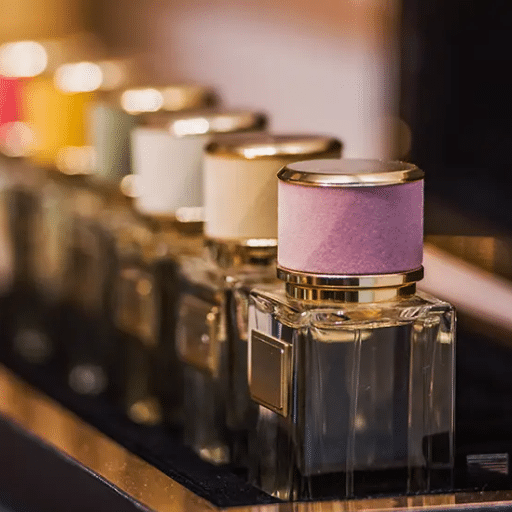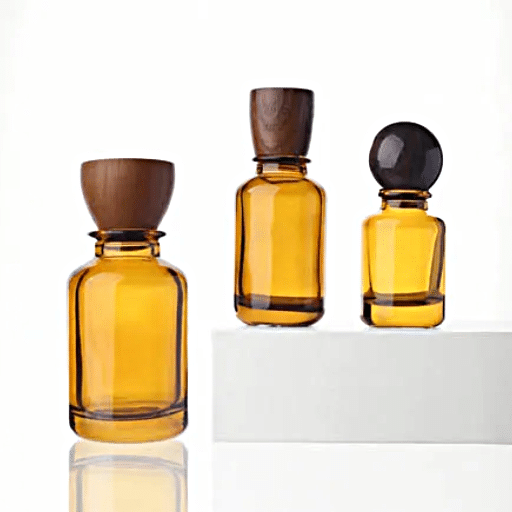The perfume industry sits at the crossroads of art and commodity, where packaging is one of the most significant factors in defining a product’s identity and market appeal. As 2025 approaches, the perfume packaging landscape is changing, driven by innovation and rising consumer demand for sustainability. Through this publication, the main themes that are going to create the future of perfume packaging are discussed, starting from the employment of new materials that are both cutting-edge and eco-friendly, to the creation of brand new designs that will not only catch the eye of the consumers but, at the same time, will help them stay loyal to a particular brand. Suppose you are a scent aficionado or a professional in the field. In that case, this expansive examination of the issue will give you an understanding of the new packaging ideas that brands are using to keep ahead in an ever-more competitive industry.
Introduction to Perfume Packaging Trends

Perfume packaging progression has sustainability and consumer participation as two main factors that go with the package. Consumers who are increasingly aware of the environment are partnering with brands that offer environmentally friendly options, such as recyclable materials, biodegradable components, and the latest refillable designs that generate the least waste. At the same time, different consumer groups are now looking for packaging that offers an experience not only luxurious but also personalized. Packaging that has high-impact visual and tactile details and easy-to-use functionality is now a necessity for businesses looking to attract and keep customers. These trends are why it is the brands’ responsibility to merge their ecological side with a more creative, differentiated market that has space for all the rule-breakers and risk-takers in packaging and product development.
The Importance of Packaging in Fragrance Marketing
Packaging is a very important factor in fragrance marketing as it is the primary physical connection point between a brand and a customer. According to research, consumers already make judgments about a product based on its packaging within the first few seconds of contact. What the packaging is made of, how it looks, and how well it performs are the elements that could trigger purchase decisions by indicating value, quality, and the brand itself. For example, the use of high-quality materials, such as transparent colored glass or metallic coatings, gives a feeling of luxury and exclusivity; on the other hand, very different forms and designs make a product feel very modern and stand out on the shelf.
Sustainable materials are now a necessity for the eco-conscious consumer rather than an optional feature. A report on consumer behavior finds that the vast majority of people prefer recyclable and biodegradable packaging and are influenced by a product’s environmental friendliness over other factors in their purchasing decisions. The overall picture is that more than 70% of survey respondents preferred buying from eco-friendly brands. Add to that the practicalities, such as childproof pumps, waste-reducing magnetic caps, and the ease of refilling products, which make the packaging more user-friendly and thus contribute to long-term customer satisfaction. Hence, the purpose of packaging in fragrance branding is not just to hold the product but also to serve as a strategic device that creates an equilibrium between beauty, eco-friendly factors, and functionality, pulling the brand through in a challenging market.
Overview of Key Trends Shaping 2025
As the global landscape changes, several major trends are poised to become significant factors in consumer industries and habits in 2025. To be specific, environmental considerations remain the most vital issue, and companies are becoming increasingly conscious of this by adopting carbon-neutral and closed-loop economy strategies. This change also includes infrastructure modifications such as renewable energy, the use of novel waste-reduction techniques, and the switch to eco-friendly product designs. Technological adaptation is still a priority, with the trio (Artificial Intelligence, Machine Learning, and the Internet of Things (IoT) still being the major factors behind the transformation of such fields as healthcare, logistics, and retail from the manual work era to the automation era, with enhanced data analytical abilities being provided to the handlers.
Moreover, personalization is becoming a must across different market sectors. Consumers are increasingly accustomed to tailored experiences, whether through digital applications, product presentations, or shopping occasions. The present-day push for data collection and predictive analytics has gone a long way toward enabling brands to deliver precise and relevant content. Also, work-from-home options and hybrid in-office/out-of-office work are where workplace change and innovation have come together, posing a challenge for companies as they cope with the change and navigate the new situation. Besides, the hybrid and remote operating models are also redefining work conditions and culture, challenging companies to better equip their employees and provide services that meet their needs.
Consumer Expectations and Brand Perception
Modern customers increasingly base their expectations on the rise of digitalization and the easy access to information. The contemporary consumer now expects very high standards of service that start with the very personal, the very transparent, and the very sustainable. They now want from brands not only the finest-quality products or services but also those aligned with ethical practices and market policies that promote sustainability. A study of data patterns has presented evidence of a change in customer behavior, now preferring companies that follow stewardship of nature, promote inclusivity, and support social impact.
In addition, the review of prevailing digital behavior indicates a strong appetite for the outcome of the activity to be readily experienced. Instant quickness, simple-to-use platforms, and zero trouble during transactions are at the forefront of consumer demands. Loads of materials available on the internet have significantly shaped the brand’s perception through public reviews, social media, and user-generated content. Moreover, companies that can predict subtle changes in behavior and expectations are in a stronger position to retain loyalty in the long run.
Design Aesthetics in Perfume Packaging
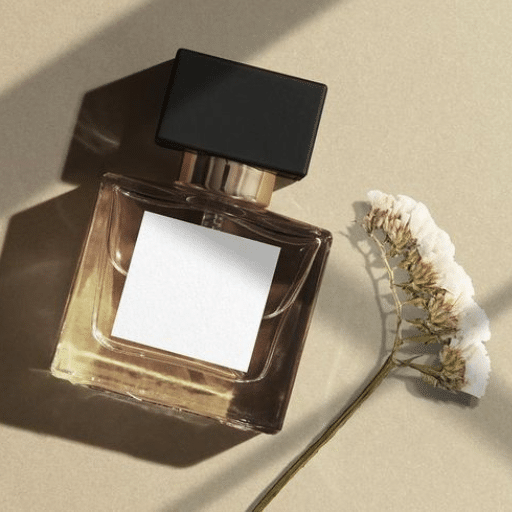
Practical design aesthetics in perfume packaging play a critical role in influencing consumer purchase decisions. On the one hand, the packaging acts as a guard, and on the other, it is a highly influential marketing tool that conveys the brand’s image and the fragrance’s aroma. Quite often, minimalist designs convey a product’s idea in an exquisite, sophisticated way, whereas imposing, detailed designs can be seen as ‘luxurious’ or ‘creative’. One thing is for sure: using materials like glass or metallic finishes will make the product more costly and appeal to the same group of people who are looking for more expensive products. Moreover, typography, color schemes, and bottle shapes are selected to create a point where the product will stand out vividly and to differentiate the product’s overall market position.
Emerging Visual Trends for 2025
The 2025 visual trends are set to be a powerful amalgamation of future looks and natural elements, driven by technological progress and a new era of sustainable awareness. One major trend is the dominance of nature-inspired design elements called biophilic design, which uses forms, materials, and colors from nature to create a balanced, healthy environment. Not only this, the appeal of iridescent and holographic finishes is on the rise, offering a futuristic yet natural allure that harmonizes with the latest designs. Minimalism still holds its dominant position, only it is becoming softer through its combination with asymmetries and the use of unusual materials, which are, in fact, the groundbreakers in the simplicity of design.
Another top trend focuses on customization and inclusivity. Through modular designs and adaptable visual elements, brands are responding to the needs of very different consumers as personalization requirements increase. Besides new opportunities arising from AR and VR technologies, the set of tools for immersive digital experiences is expanding significantly, thereby bridging the physical and virtual worlds. Sustainable materials and eco-friendly packaging solutions remain the two main factors contributing to making the world healthier and enhancing the brand’s image of responsibility, as they align with global efforts to improve environmental and social impact.
Color Palettes and Their Impact on Brand Identity
Color schemes are crucial for building brand identity because they directly influence consumers’ feelings and responses. The study results show that color can account for almost 85% of consumer choices, thus playing an essential role in building a strong, recognized, and liked brand. Different colors make people feel differently; to give an example of this association, blue is usually considered a color that expresses trust and reliability and, therefore, is frequently used in the technology and financial sectors, and, on the other hand, red is and has long been the color of urgency and passion and is hence very often seen in the food and retail industries.
Effective color utilization aligns with a brand’s central values; thus, it remains consistent and rooted in the target audience’s emotions. An entity that opts for appropriate colors and keeps them consistent across all platforms builds a stronger visual identity, one that is also simpler and better remembered, resulting in higher consumer loyalty in the long run. The combination of modern tools and methods has enabled companies to choose colors with greater precision based on data, allowing them to operate effectively with their brand strategies, consumer behavior, and market trends.
Innovations in Materials for Fragrance Packaging

Sustainable, technologically advanced materials have had a significant impact on the evolution of fragrance packaging. The most important developments in this area are the biodegradable plastics made from polylactic acid (PLA) and plant-based resins, which make the products more eco-friendly and, at the same time, more durable. In recent years, the use of lightweight, recyclable glass has been growing steadily due to its environmentally friendly and cost-effective characteristics. Besides being environmentally friendly, the use of renewable materials such as bamboo and cork also meets the needs of eco-conscious consumers. The development of innovative packaging technologies, such as caps with RFID chips, also adds value by enabling better inventory management and, in turn, making the product more credible. The new materials they are developing not only help achieve environmental targets but also give the brand a competitive edge in an ever-changing market.
Premium Materials: Enhancing the Luxury Experience
The perception of premium materials through craftsmanship is the way the luxury and exclusivity aspects are built around them. An example process would be the accurate hand-stitching of fine leather or the well-calculated application of brushed metal in high-end watches, which clearly indicates the overlay of artisanal skill and material quality. These processes are the reason each product is not only superior in the duties it must perform but also very good-looking; they are, therefore, the perfect choice for the most demanding and unique-seeking customers. The luxurious materials that have in them the elements of luxury and exclusivity and are at the same time sourced sustainably and fairly, like with the use of sustainable gold and silk produced ethically, are gaining popularity among environmentally conscious groups, and the overall population agrees that them are premium and exclusive at the same time. Also, luxury experiences are pleasantly personalized through the outcomes of advanced processes such as laser etching and micro-engraving, which enable the creation of very special and unique items.
Eco-Friendly Materials: Sustainability in Focus
Eco-friendly materials such as recycled metals, organic cotton, and plant-based alternatives to leather are gradually but fundamentally altering luxury markets. These examples of recycled gold, for instance, have been able to reduce carbon emissions to a much lower degree than the traditional mining procedure, thereby establishing the jewelers’ ability to turn both ethical and sustainable. On the other hand, the demand for luxury, as well as eco-conscious, animal-free options, is increasing due to the manufacturing of innovative fabrics like Piñatex, a pineapple-based fabric that is gaining significant market share among the most advanced-thinking brands.
The use of these materials not only reduces resource consumption but also supports the development of a circular economy, where waste is reduced and materials are recycled. Surveys indicate that the use of eco-friendly substitutes might minimize water consumption and greenhouse gas emissions from textile production by as much as 50%. If manufacturers implement the above measures, they will be able to attract more eco-conscious consumers as the market becomes increasingly aware of environmental issues, not only customers but also society, and of the geographical areas put at risk by the pollution caused by businesses.
Technological Advancements in Packaging Materials
The technological improvements of recent years have begun to have a significant impact on the production of biodegradable packaging materials, which now serve as a very valid, eco-friendly alternative to common plastics. Polylactic acid (PLA), a leading material for sustainable packaging made from raw materials like cornstarch and sugarcane, is becoming increasingly popular due to its durability and compostability. Researchers in nanotechnology played a significant role in creating biopolymers that are very strong and have barrier properties, reducing material waste and emissions while remaining efficient and eco-friendly. Moreover, adding natural fibers such as hemp or bamboo to packaging materials has the added advantage of leveraging the full potential of renewable, biodegradable solutions. These technologies are simultaneously reducing dependence on oil and addressing the global issue of plastic waste scattered on land and in the oceans; therefore, they are the core of sustainable development in the packaging industry.
Eco-Friendly Packaging Practices
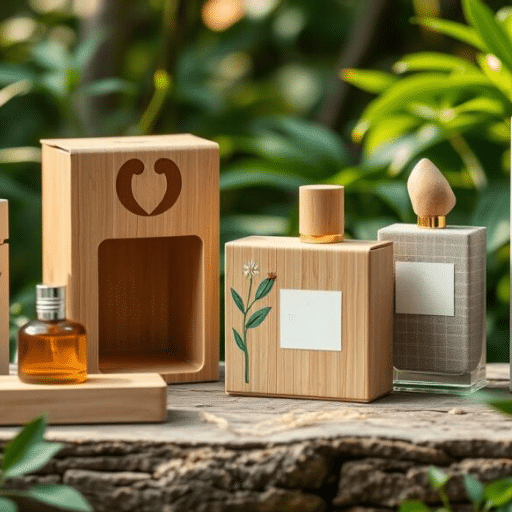
Eco packaging offers numerous significant benefits, including environmental and cost-saving advantages. For one, it reduces the amount of debris produced, thereby minimizing the impact on the surroundings by using biodegradable, recyclable, or compostable materials. This measure not only reduces pollution but also saves natural resources. Secondly, sustainable packaging can be a factor influencing brand reputation, as more and more business sectors are deciding to go “green”. Finally, it controls the budget in the long run by decreasing the quantity of material used and, consequently, the disposal fees. These reasons make eco-friendly packaging the best choice for most industries that view the environment as the source of all business responsibilities.
Reducing Environmental Impact in Packaging Design
The use of advanced materials is a key factor in mitigating adverse environmental effects and, hence, in the sustainability of packaging design. Biodegradable and compostable materials will accelerate the reduction of the waste problem in the future. Regarding this, they are breaking down better, making them not only more beneficial to the environment but also very efficient. One possible alternative for producing Polylactic acid (PLA), derived from renewable sources such as cornstarch, is gaining popularity in the market. Moreover, recycled content is increasingly used in packaging, for example, post-consumer recycled plastics and papers, which, in turn, further reduce the amount of extracted raw materials and the pollution and other environmental ills that result.
Creating edible packaging is another widely anticipated breakthrough that can reduce waste after consumption. In the same way, the method of lightweighting—constructing packaging with reduced material use while maintaining the same strength—allows for a considerable decrease in resource use and emissions during transportation. Those, as mentioned earlier above, presented options separately are innovative. Still, their use in concert with solid life-cycle analyses—complete environmental impact evaluations—represents the next stage of the circular economy’s packaging strategies and, at the same time, the solution to processing the existing waste for good.
Consumer Preferences for Eco-Conscious Brands
The conscious consumption trend of the present day has made a strong impression on the population, and it has now become a factor driving more sales for brands that prioritize sustainability. Statistics from the most recent research show that almost 80% of buyers are prepared to pay more for products that are not only the so-called “green products” but also have clear labels indicating they are biodegradable, carbon-friendly, and ethically sourced. The main component here is trust, and the more valid information manufacturers provide, the more consumers are inclined towards the product. The new emerging market for sustainable products is highly dependent on the notion of saving the planet. At the same time, it is only available to the young hip generation, namely the millennials and Gen Z. For businesses, this requires a rethink on how to approach and deliver their products and services, thereby making sustainability not only a competitive selling advantage but rather a basic trend for them to meet the ever-changing market demand.
Personalization Strategies in Fragrance Packaging
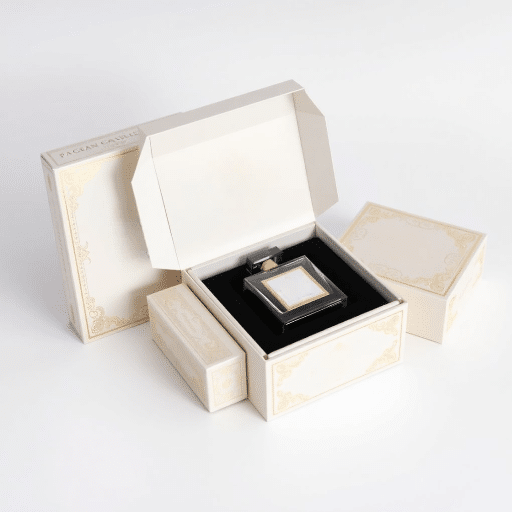
Personalization in fragrance packaging is made possible through a few methods, such as tailored design elements and consumer-centric solutions. These strategies are mainly:
- Customizable Packaging: Every brand can offer a wide range of choices to its customers, such as bottles with engravings, labels with the customer’s name, or wrapping the bottle in a way the customer has never seen before. These options not only make the product feel more custom and luxurious but also empower consumers to think outside the box.
- Interactive Technology: The presence of QR codes or NFC tags in the packaging design directs consumers to a variety of personalized content, such as perfume mix-and-match guides. Moreover, they may be interested in perfume recipes or gifts for their loved ones, all of which are available through this technology.
- Limited Editions: A special limited-edition package tied to a season, event, or collaboration builds a sense of prestige and attracts buyers seeking unique encounters.
- Sustainability Integration: The increasing demand for green technology, eco-friendliness, and sustainability is driving consumers to go green. Besides, the eco-friendly, refillable packaging option offered to individuals is the right direction to take, as it would not only make them feel part of a significant movement but also enable them to benefit from the facilities.
Retail stores are moving in the same direction as the two strategies above: developing a more personalized consumer base and creating a brand seen as more innovative and customer-centric.
Customizable Packaging Options for Consumers
Custom packaging designed by consumers has recently become one of the main factors in brand engagement, as it lets brands provide customers with choices beyond being built and, at the same time, build stronger, more personal relationships. One of the latest platforms has claimed that brand design packs, which are actually made to suit individuals’ personal tastes, can increase the brand’s value by up to 30%. Characteristics such as labels with personal names, the option to choose colors, or one-of-a-kind aesthetics allow buyers to have a significant say in the product’s manufacturing; that, in turn, fosters an intense, emotional bond and loyalty.
At present, technological advancements in packaging have enabled dynamic customization, including but not limited to digital printing and adaptive production lines. A perfect illustration is variable data printing (VDP), where brands can conceive and print thousands of different designs or messages in a single run. Moreover, adding QR codes or NFC tags to packaging enhances consumer interaction while shopping by allowing consumers to access information or promotions with just their smartphones, making the buying experience more pleasurable.
Brand Loyalty Through Personalized Experiences
Personalization has changed how customer journeys are handled, as it has become a staple of strong brand loyalty in the market. By using advanced consumer data analytics tools, companies can customize their products and services to fit the individual needs and preferences of each customer, which in turn makes customers feel they are getting value and makes them more loyal to the brand. Recent computations have shown that the likelihood of consumer-brand engagement increases by more than 70% when brands offer personalized experiences, and this is a strong indicator of this approach’s effect on customer retention.
Brands can build stronger emotional bonds with their target audience by implementing tactics such as dynamic content delivery, personalized product recommendations, and customer-focused loyalty initiatives. Utilizing a machine-learning algorithm to dig deeply into purchase history may enable the brand to offer products or services that are very close to the customer’s interests, thereby increasing the likelihood of a repeat purchase. Moreover, with the most precise communication through digital channels, it will not only attract but also engage the customer, leading to a favorable outcome through the use of all communication points.
According to studies, sales volume increased by up to 10-15% when personalization was present. This is the evidence that personalization is no longer just an option but rather a requirement if one really wants to gain significant profits. Nonetheless, this factor is more customer-related than the rest of the business issues, i.e., not achieving the expected revenue due to a lack of personalization.
Future Trends in Personalized Packaging Solutions
Technological advances, sustainability needs, and evolving customer needs greatly influence Future Personalized Packaging. One of the significant trends in the industry is the adoption of innovative packaging solutions, such as QR codes and NFC (Near Field Communication) tags, that enable dynamic consumer interaction. Such technologies would allow brands to deliver the most relevant content to consumers, such as product information or user-friendly discounts, with everything a simple swipe on a smartphone or an NFC tap away. This is not to mention that brands have to get used to sustainability as the main factor; therefore, they have no other option but to use friendly materials, and to some extent, they are obligated to develop biodegradable alternatives.
Similarly, the importance of artificial intelligence (AI) and machine learning increases the usage of data to provide hyper-personalized packaging experiences. By studying purchasing trends, demographics, and geographic data, the marketing department can develop packaging that aligns with customers’ specific tastes, thereby increasing engagement and loyalty. These patterns point to the liaison between technology, eco-friendliness, and personalization, indicating that the development of new packaging solutions in the future will benefit from market entry and the ability to meet all consumer needs. It is anticipated that this merger will create a competitive advantage and redefine the packaging industry as we advance.
Reference Sources
Analysis on Chanel Group Digital Marketing Strategies
Key Findings: This study explores Chanel’s marketing strategies, emphasizing its iconic packaging designs like the double C logo and classic black-and-white themes.
Gen Z and Local Brands of Fragrances: What Are the Decision-Making Forces?
Key Findings: This research focuses on Generation Z’s preferences for fragrance packaging, highlighting their attraction to visually appealing and innovative bottle designs.
Frequently Asked Questions (FAQs)
What are the key trends in perfume packaging for 2025?
It’s safe to say that there will be innovative changes in the packaging of perfumes by 2025. The developments in packaging will show sustainability and being creative more and more now. Cutting down on waste and adding an extra step and delight in unboxing will be achieved through eco-friendly packaging that is luxurious and premium in materials. It is believed that, first and foremost, through refillable perfume bottles, the brands will adopt package designs with a double edge. These designs will seal in the aroma while remaining very sustainable. Consumers, in addition to being aware of the environment, will also enjoy the technology-enhanced interactions designed by the designers throughout the journey from display to use.
How will packaging design influence the fragrance industry in 2025?
The way in which fragrance industries will reach the audience will hugely depend on packaging design innovations, which are the first and most important criteria that need to be met. The beauty business will make perfume purchasing a special point in time, and the packaging will be a major factor in consumer attraction. The current perfume packaging preferences point to a more radiant, diversified look for bottles and packaging in general, while the typical design remains the olive leaf. Moreover, the packaging will be designed to include features that make the perfume bottles more practical, aligning with consumer needs that are not very clear but are evolving. This strategy ensures that though the fragrance is attractive, it remains a significant part of everyone’s lives as a daily practical tool.
What are some best practices for creating memorable perfume packaging?
When it comes to designing packaging for a perfume, suppliers need first to identify a particular target market. What they should do next is to use their creativity by integrating luxury in the packaging through, such as the beautiful glass perfume bottles and different box designs. Seasonal packaging and limited-edition designs are excellent ways to attract and engage consumers and promote the launch of new products. Another factor is that a customer-friendly unboxing experience leads to customer loyalty to the brand. Finally, the packaging should be such that the brand’s identity reasserts whilst at the same time it provides the very needed protection and a good display of the fragrance.
What role does packaging play in the success of new perfume launches?
Packaging is an underestimated role that can make or break the success of a new perfume’s launch by the mere making of a glamorous image that, in a way, impacts and attracts the consumer. In a market filled with all kinds of products, stand out with unique bottles and catchy perfume packaging. Through packaging, a connection to the fragrance’s soul is made, and the brand’s values and story are also communicated. Important to note is the fact that in modern days, there has to be a perfect match between a stunning appeal that is a feast for the eyes and at the same time easy reach and usage of the fragrance. The package itself, when well designed, carries a great majority of the responsibility for the purchase and plays a very important role in building a customer’s loyalty.

